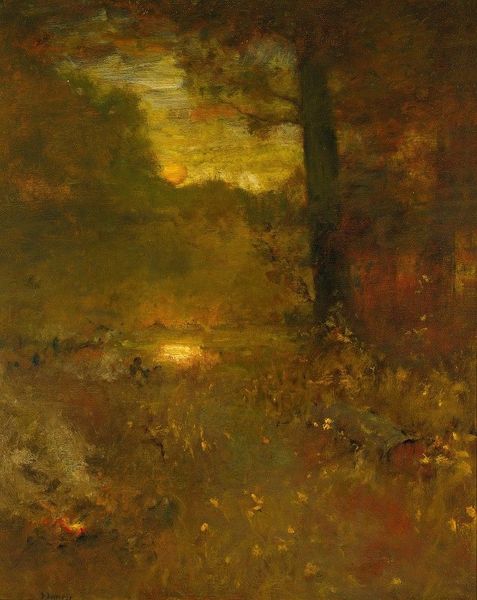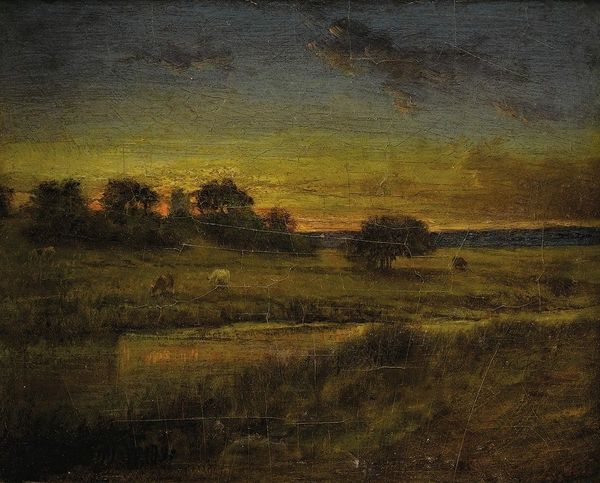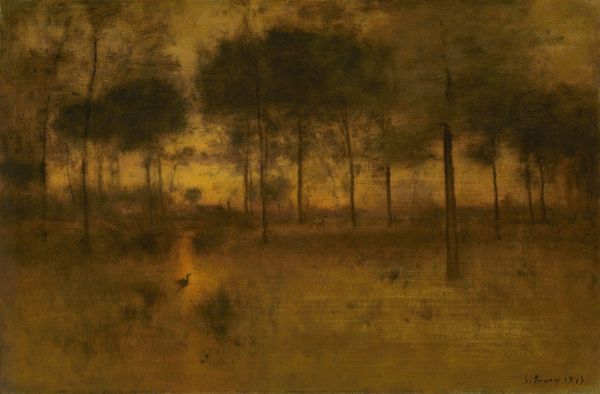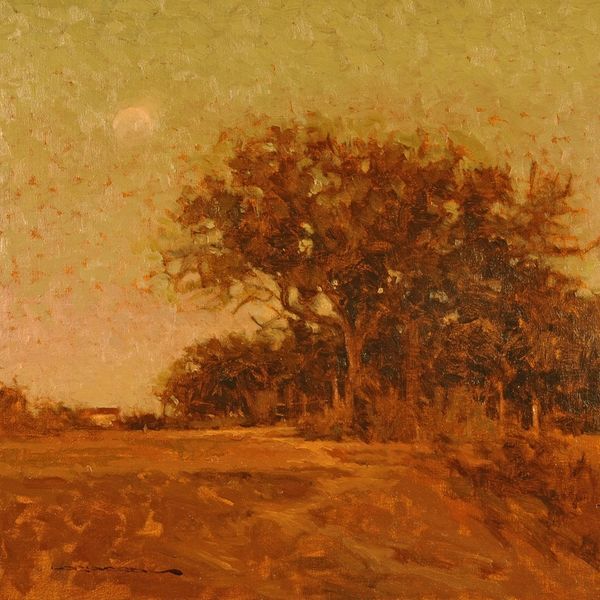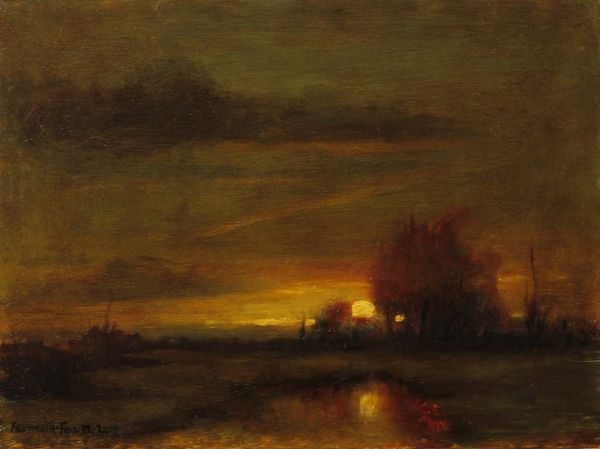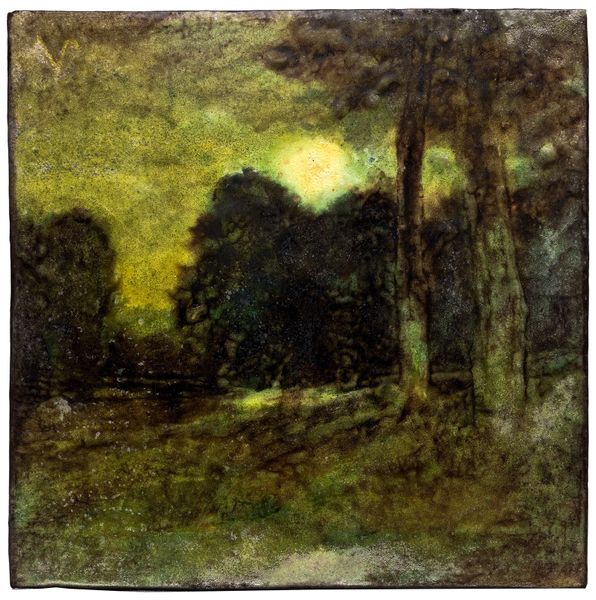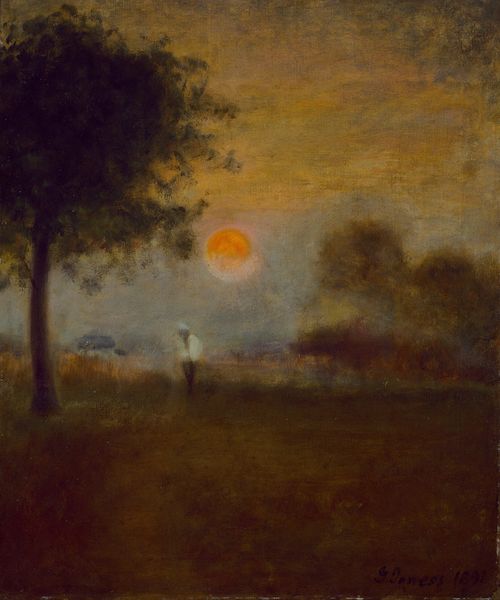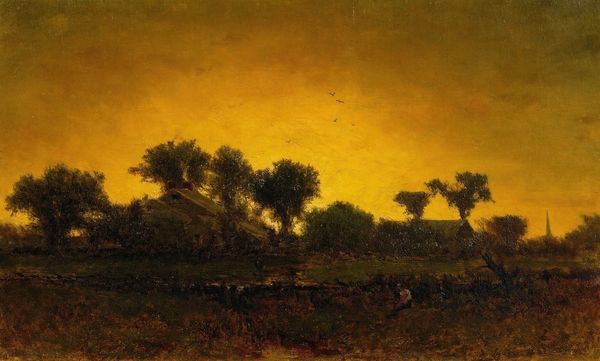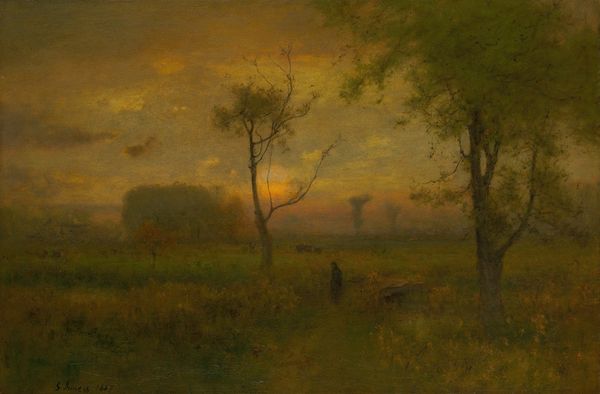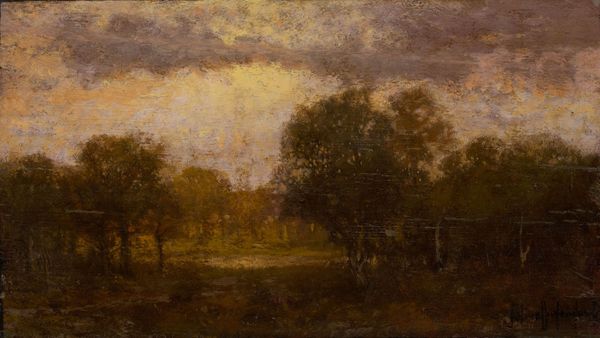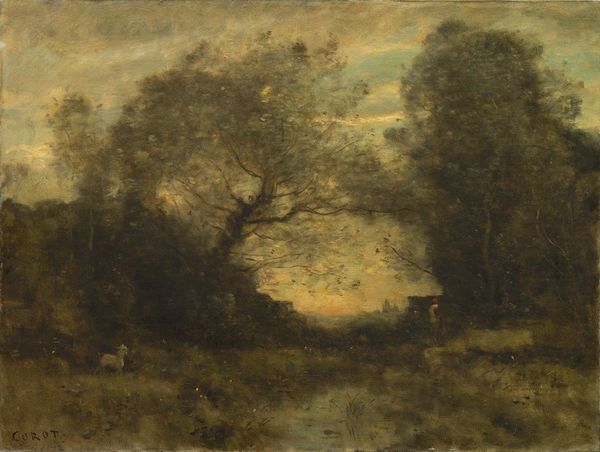
Dimensions: support: 1041 x 1689 mm frame: 1410 x 2050 x 120 mm
Copyright: CC-BY-NC-ND 4.0 DEED, Photo: Tate
Curator: This is Sir John Everett Millais's 'The Moon is Up, and Yet it is not Night', currently housed at the Tate. Editor: It's captivating, with an almost unsettling golden glow. What strikes me most is the composition; that hazy, liminal space. Curator: Millais, who lived from 1829 to 1896, likely created this scene as a commentary on the changing landscape of Britain during the industrial revolution and the impact of human activity on the natural world. Editor: Interesting. The muted palette emphasizes the materiality—the heavy application of oils contributes to this dreamy, melancholic affect. Curator: Indeed, the materiality is key to its evocative power. We can appreciate its historical context and its resonance with contemporary concerns about environmental degradation. Editor: I see that now, but the mood is undeniable. It's a beautiful exploration of light and form, irrespective of the underlying socio-economic critique.
Comments
tate 6 months ago
⋮
http://www.tate.org.uk/art/artworks/millais-the-moon-is-up-and-yet-it-is-not-night-n05632
Join the conversation
Join millions of artists and users on Artera today and experience the ultimate creative platform.
tate 6 months ago
⋮
Millais first achieved fame and success as a member of the Pre-Raphaelite Brotherhood. He always maintained close links with the Royal Academy, however, and became an Academician in 1863. Great natural talent, personal charm and the status of being a Royal Academician brought prosperity. In 1881 he acquired the lease and shooting rights of an estate at Murthly, Perthshire. This picture was painted during one of Millais' last visits there. The scenery inspired three large, sombre landscapes which were all painted during 1890-1. The view here is of Carnleth little bog which was a favourite refuge for hunted deer. The title is a quotation from Lord Byron's poem 'Childe Harold's Pilgrimage'. Gallery label, August 2004

